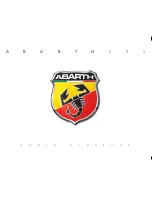
STARTING AND DRIVING
* Option/accessory.
426
Auto braking after a collision
In the event of a collision in which the activation
level is reached for the pyrotechnic seatbelt ten-
sioners or airbags, or if a collision with a large
animal is detected, the car's brakes are automat-
ically applied. This function is to prevent or
reduce the effects of any subsequent collision.
After a serious collision there is a risk that it is no
longer possible to control and steer the car. In
order to avoid or mitigate a possible further colli-
sion with a vehicle or an object in the vehicle's
path, the auto braking system is activated auto-
matically and brakes the car in a safe manner.
Brake lights and hazard warning lights are acti-
vated during braking. When the car has stopped,
the hazard warning lights continue to flash and
the parking brake is applied.
If braking is not appropriate, e.g. if there is a risk
of being hit by following traffic, the system can be
overridden by the driver depressing the accelera-
tor pedal.
The function assumes that the brake system is
intact after the collision.
See also the sections "Rear Collision Warning"
and "Blind Spot Information".
Related information
•
•
•
•
Rear Collision Warning (p. 349)
•
Parking brake
The parking brake prevents the car from rolling
away from stationary by means of mechanically
locking/blocking two wheels.
The control for the parking brake is located in the tunnel
console between the seats.
A faint electric motor noise can be heard when
the electrically-operated parking brake is being
applied. The noise can also be heard during the
automatic function checking of the parking brake.
If the car is stationary when the parking brake is
applied then it only acts on the rear wheels. If it is
applied when the car is moving then the normal
foot brake is used, i.e. the brake acts on all four
wheels. Brake function changes over to the rear
wheels when the car is almost stationary.
Summary of Contents for XC 60 TWIN ENGINE
Page 1: ...OWNER S MANUAL ...
Page 2: ......
Page 14: ......
Page 15: ...INTRODUCTION ...
Page 29: ...INTRODUCTION 27 Fuel consumption and CO2 emissions p 600 Air quality p 181 ...
Page 58: ... INTRODUCTION 56 Overview ...
Page 61: ...SAFETY ...
Page 88: ......
Page 89: ...INSTRUMENTS AND CONTROLS ...
Page 96: ... INSTRUMENTS AND CONTROLS 94 Fuel gauge p 102 License agreement for the driver display p 103 ...
Page 180: ......
Page 181: ...CLIMATE CONTROL ...
Page 213: ...LOADING AND STORAGE ...
Page 230: ......
Page 231: ...LOCKS AND ALARM ...
Page 268: ... LOCKS AND ALARM 266 Country Area Type approval Serbia The United Arab Emirates ...
Page 270: ......
Page 271: ...DRIVER SUPPORT ...
Page 403: ...STARTING AND DRIVING ...
Page 471: ...AUDIO AND MEDIA ...
Page 518: ......
Page 519: ...WHEELS AND TYRES ...
Page 542: ......
Page 543: ...MAINTENANCE AND SERVICE ...
Page 587: ...SPECIFICATIONS ...
Page 618: ...ALPHABETICAL INDEX 616 ...
Page 619: ......
Page 620: ...TP 23064 English Int AT 1717 MY18 Copyright 2000 2017 Volvo Car Corporation ...
















































